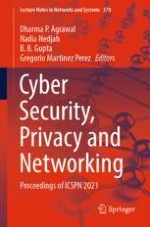2022 | OriginalPaper | Buchkapitel
Classification of Network Intrusion Detection System Using Deep Learning
verfasst von : Neha Sharma, Narendra Singh Yadav
Erschienen in: Cyber Security, Privacy and Networking
Verlag: Springer Nature Singapore
Aktivieren Sie unsere intelligente Suche, um passende Fachinhalte oder Patente zu finden.
Wählen Sie Textabschnitte aus um mit Künstlicher Intelligenz passenden Patente zu finden. powered by
Markieren Sie Textabschnitte, um KI-gestützt weitere passende Inhalte zu finden. powered by
